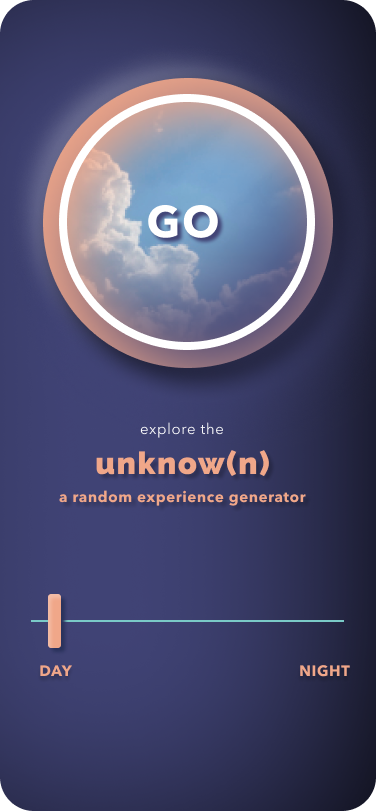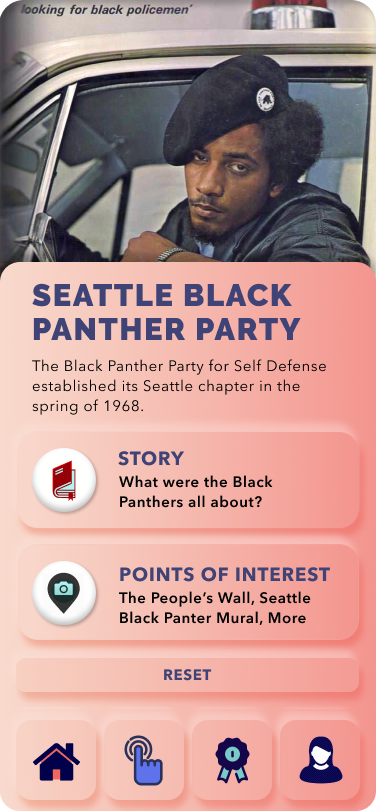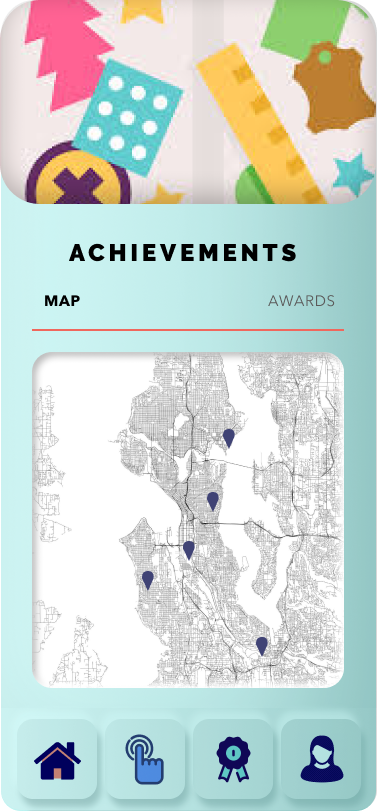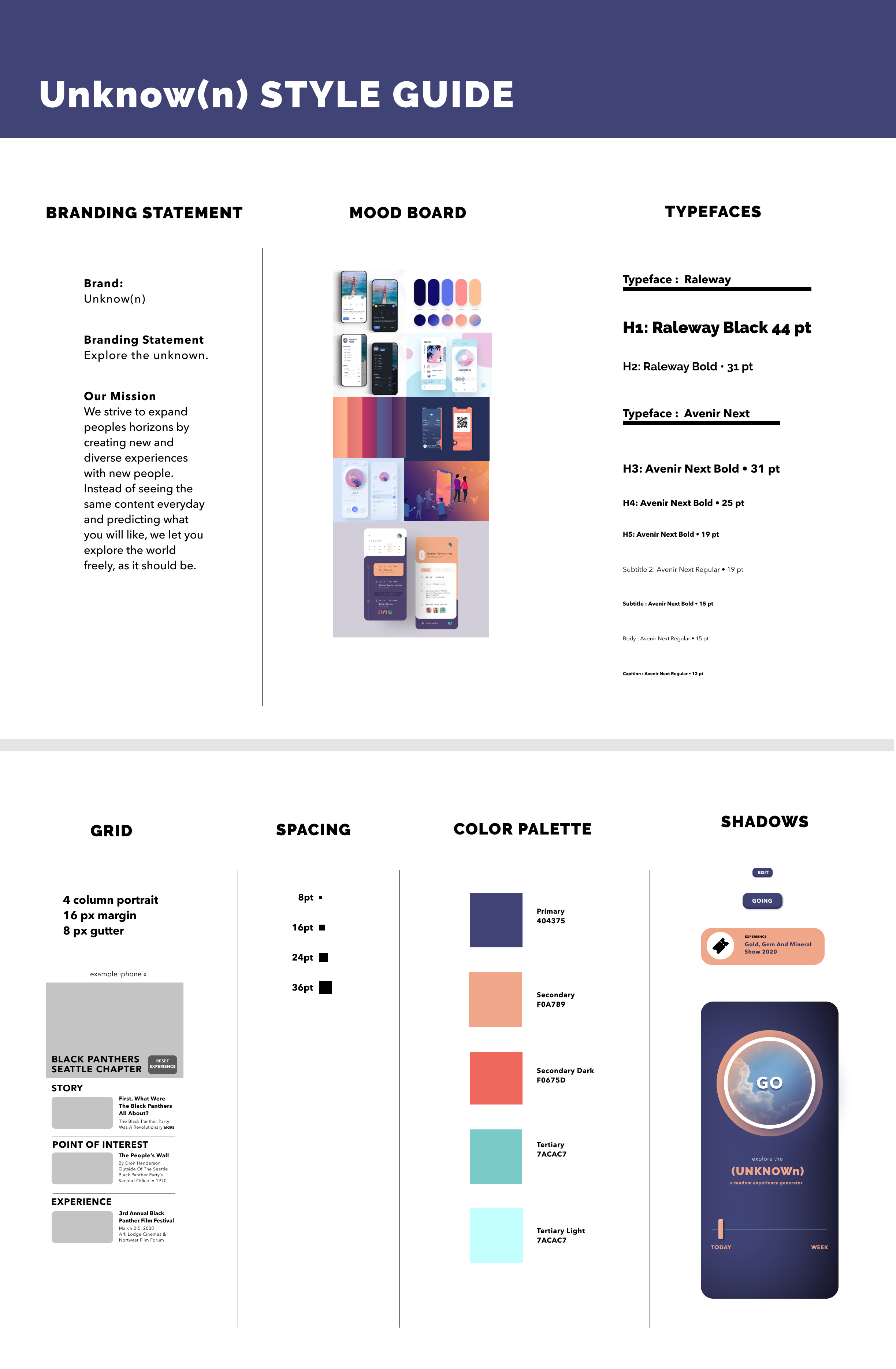
Unknow(n)
Unknow(n) is an app created in the UX and Visual Interface Design certificate program at the University of Washington. The initial concept was created in a team of four, which we each individually took to completion.
THE PROBLEM
“In today’s world dominated by social media platforms, we are finding ourselves more isolated in social bubbles, where everyone agrees with us. How might we help people escape their bubbles and help understand each other with our different worldly views.”
INTERVIEWS
Our team of four conducted interviews gathering valuable insight about their interactions online. We wanted to see how users used the internet in daily life, how they interacted with others, and instances of conflict and resolution.
ARCHETYPES
From the 12 interviews, our team created affinity maps clustering common traits within our our interviewees. We narrowed our scope to 3 archetypes (The Engager, Observer, and Avoider) that best represented recognized behaviors, and took them through a journey map.
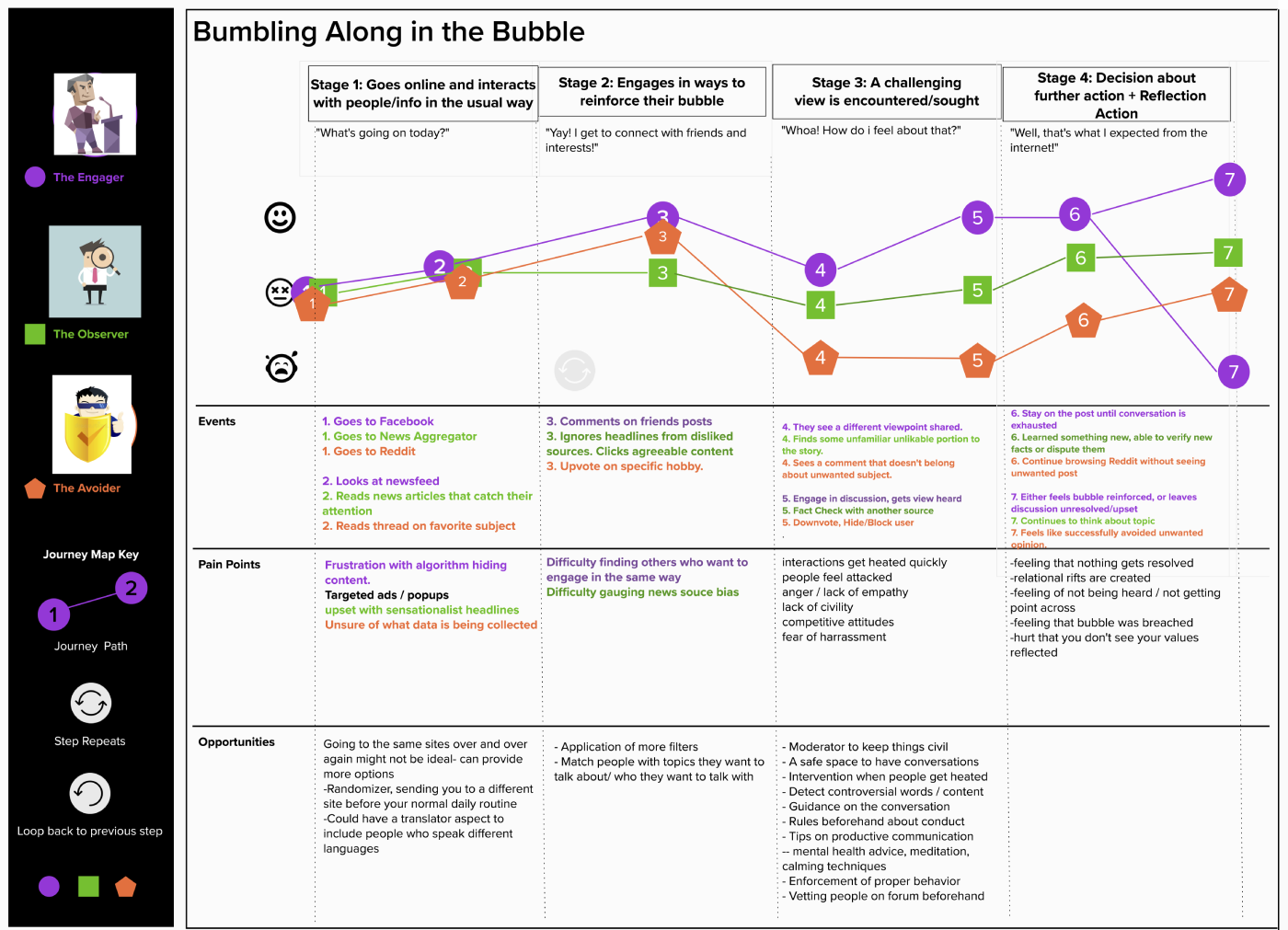
ADDITIONAL RESEARCH
 Social and Psychological Factors of the Bubble
Social and Psychological Factors of the Bubble
Cultural narratives enforce societal beliefs that uphold a conflict. These narratives close us off to alternative information.
- Humans avoid hearing opposing views from those close to them, because it damages a sense
of shared reality.
- People can change their beliefs. Views must be: credible, hard to ignore, and strong enough to create cognitive dissonance
Everyday news has generally been perceived as more negative than positive. Mistrust in news has gone up almost 3-fold over the last 30 years
How Marketing Encourages Tribalism
Monetized websites draw revenue primarily from the ads they host, so ads may be selected to reflect the tribalism of site users.
tribes in order to build our loyalty to brands, products, and ideologies. Many marketing strategies are explicitly designed to create and accentuate tribal “us vs. them” divisions.
-
A. Interrupting the feedback loops, such as by introducing
unexpected content.
- B. Using marketers’ tactics to introduce and promote non-
threatening new tribes designed to bring people together
instead of divide them
America in One Room - In an experiment, researchers put 526 Americans from 47 states in a resort for four days talking about political issues. In the end, the percentage of people who thought American democracy was working well rose from 30% to 60%
Middle Ground - A YouTube series brings together strangers with opposing viewpoints to have a thoughtful discussion on divisive topics such as abortion, political ideology, religion, and immigration.
Skype with Your Enemy - Video conversations. Young activist group in Gaza initiated video calls between Palestinians and Israelis since 2014. Some organizers were arrested in 2020.
Hi from the Other Side - A service that matches people from across the political spectrum to have one-on-one conversations with each other.
INSIGHTS SUMMARY
The interviewees showed a desire to reach outside the bubble, but concerns and fears of interacting online was the main concern. By creating a safe environment we could help users reach their goal.
IDEATION

TESTING

PAPER PROTOTYPING
Each of our team members started creating our own versions of the Randomizer. Some features I wanted to add were interactivity to have users have the option to engage more if desired. Here I map out 5 user flows which are then made into paper prototypes.


WIREFRAMES
From the paper prototypes, wireframes were created in Figma. Still in a rough draft stage, these black and white versions have added clarity, with text replacing dummy text.

VISUAL INTERFACE DESIGN
